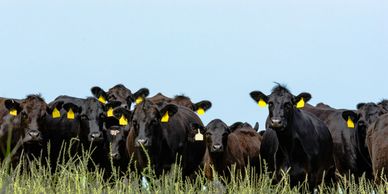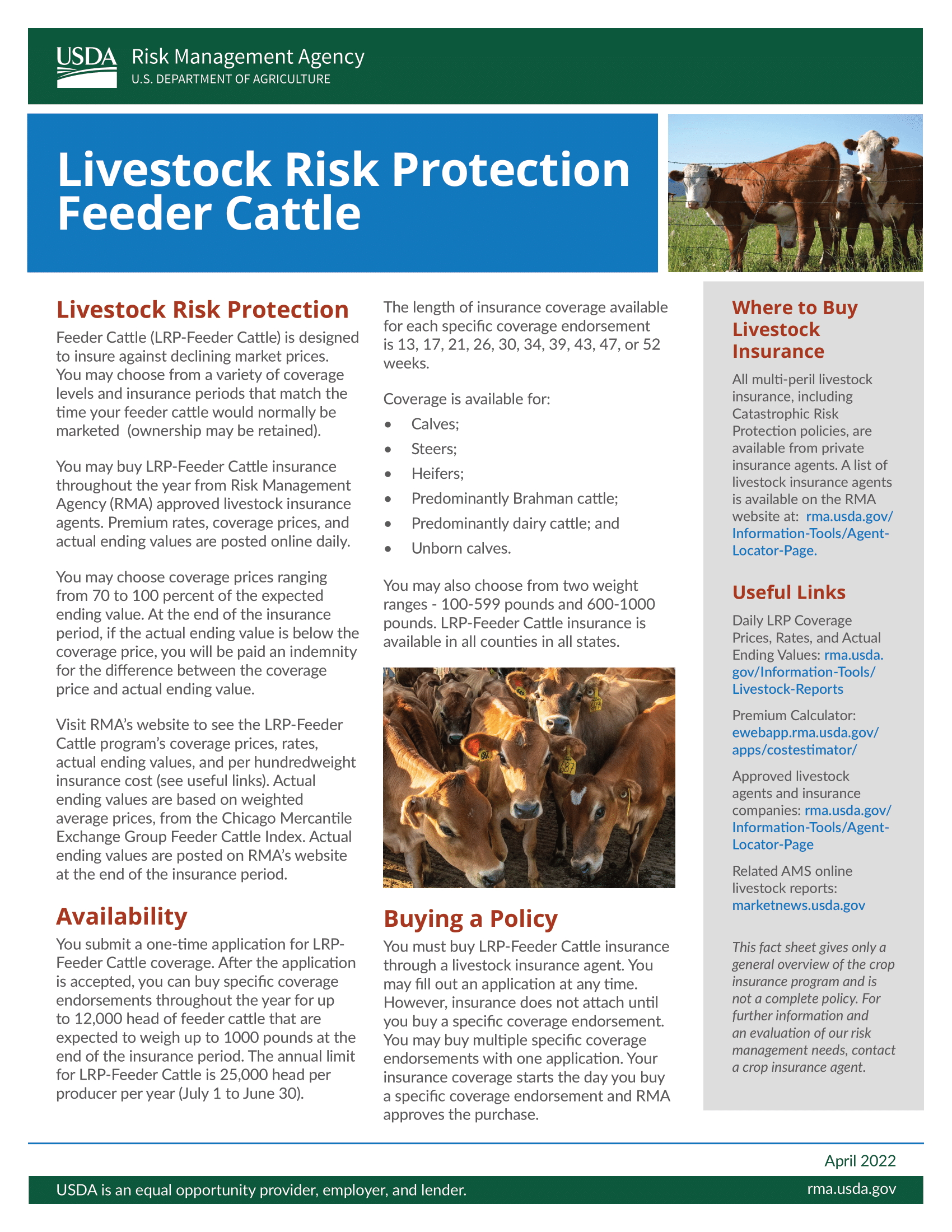Understanding Animals Threat Security (LRP) Insurance Coverage: A Comprehensive Guide
Browsing the world of livestock risk security (LRP) insurance policy can be a complicated undertaking for several in the agricultural industry. From exactly how LRP insurance policy works to the different coverage choices readily available, there is much to discover in this extensive guide that can possibly shape the way livestock manufacturers come close to threat administration in their organizations.

Exactly How LRP Insurance Coverage Functions
Periodically, comprehending the auto mechanics of Livestock Risk Defense (LRP) insurance coverage can be complex, however damaging down just how it functions can provide clarity for farmers and breeders. LRP insurance is a danger administration tool developed to shield livestock producers against unforeseen cost decreases. It's vital to keep in mind that LRP insurance policy is not a revenue guarantee; instead, it focuses entirely on price risk protection.
Qualification and Coverage Options

When it comes to insurance coverage choices, LRP insurance provides producers the flexibility to choose the insurance coverage degree, protection period, and recommendations that ideal match their threat management requirements. By comprehending the eligibility standards and insurance coverage alternatives offered, livestock producers can make informed choices to take care of threat properly.
Pros and Disadvantages of LRP Insurance Coverage
When assessing Livestock Threat Security (LRP) insurance, it is necessary for livestock producers to weigh the advantages and downsides inherent in this risk management device.

One of the primary advantages of LRP insurance is its ability to provide security against a decline in livestock costs. This can aid secure producers from economic losses resulting from market changes. Additionally, LRP insurance policy offers a level of adaptability, allowing producers to tailor protection degrees and plan periods to fit their specific needs. By securing in a guaranteed cost for their livestock, manufacturers can better handle risk and plan for the future.
Nevertheless, there are additionally some downsides to consider. One limitation of LRP insurance policy is that it does not shield versus all kinds of threats, such as condition episodes or all-natural catastrophes. Moreover, costs can in some cases be expensive, specifically for manufacturers with big animals herds. It is vital for manufacturers to carefully examine their specific threat direct exposure and economic scenario to figure out if LRP insurance policy is the right threat administration device for their procedure.
Recognizing LRP Insurance Coverage Premiums

Tips for Making Best Use Of LRP Benefits
Making best use of the benefits of Animals Threat Protection (LRP) insurance calls for tactical planning and proactive threat administration - Bagley Risk Management. To make the most of your LRP insurance coverage, take into consideration the complying with ideas:
Frequently Evaluate Market Conditions: Stay notified regarding market fads and rate variations in the livestock sector. By keeping an eye on these aspects, you can make educated decisions regarding when to buy LRP insurance coverage to safeguard against possible losses.
Set Realistic Protection Levels: When choosing insurance coverage levels, consider your manufacturing costs, market value of livestock, and prospective risks - Bagley Risk Management. Establishing realistic coverage degrees ensures that you are properly protected without overpaying for unnecessary insurance policy
Expand Your Coverage: As opposed to depending entirely on LRP insurance coverage, take into consideration diversifying your threat monitoring approaches. Incorporating LRP with various other risk administration devices such as futures agreements or choices can provide extensive coverage versus market unpredictabilities.
Evaluation and Adjust Coverage Regularly: As market conditions change, occasionally examine your LRP best site coverage to ensure it straightens with your present risk exposure. Changing protection degrees and timing of purchases can aid maximize your danger security technique. By adhering to these tips, you can maximize the advantages of LRP insurance and protect your livestock procedure against unexpected risks.
Final Thought
Finally, animals danger protection (LRP) insurance coverage is a valuable tool for farmers to handle the financial dangers connected with their livestock procedures. By understanding just how LRP functions, eligibility and this content protection alternatives, in addition to the benefits and drawbacks of this insurance coverage, farmers can make educated decisions to protect their incomes. By meticulously taking into consideration LRP costs and carrying out approaches to optimize advantages, farmers can alleviate potential losses and make sure the sustainability of their operations.
Animals manufacturers interested in acquiring Animals Danger Protection (LRP) insurance policy can check out an array of eligibility criteria and coverage choices customized to their particular animals procedures.When it comes to protection options, LRP insurance policy uses producers the versatility to choose the protection level, coverage period, and endorsements that best suit their risk administration needs.To comprehend the details of Livestock Threat Protection (LRP) insurance coverage fully, comprehending the aspects affecting LRP insurance premiums is crucial. LRP insurance costs are established by different components, consisting of the protection degree chosen, the expected rate of animals at the end of the protection period, the kind of livestock being insured, and the size of the coverage duration.Testimonial and Readjust Insurance Coverage On a regular basis: As market problems transform, periodically evaluate your LRP insurance coverage to guarantee it lines up with your existing threat direct exposure.
Comments on “Strategic Partnerships for Resilience: Bagley Risk Management”